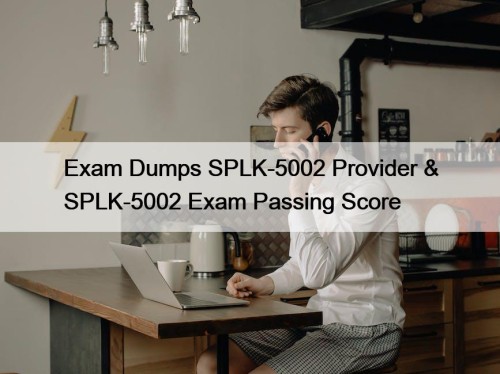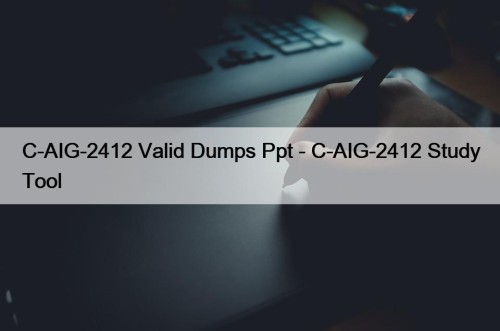Most Popular
 Exam Dumps SPLK-5002 Provider & SPLK-5002 Exam Passing Score
Exam Dumps SPLK-5002 Provider & SPLK-5002 Exam Passing Score
For candidates who are going to buy SPLK-5002 exam materials ...
 IBM C1000-185 Test Questions Fee - Latest C1000-185 Exam Forum
IBM C1000-185 Test Questions Fee - Latest C1000-185 Exam Forum
The C1000-185 PDF file contains the real, valid, and updated ...
 C-AIG-2412 Valid Dumps Ppt - C-AIG-2412 Study Tool
C-AIG-2412 Valid Dumps Ppt - C-AIG-2412 Study Tool
A lot of students have used our product and prepared ...



Valid HP HPE6-A78 Real Test & HPE6-A78 Test Labs

Aruba Certified Network Security Associate Exam HPE6-A78 exam dumps is a surefire way to get success. PassLeaderVCE has assisted a lot of professionals in passing their HPE6-A78 test. In case you don't pass the Aruba Certified Network Security Associate Exam HPE6-A78 exam after using HPE6-A78 pdf questions and practice tests, you have the full right to claim your full refund. You can download and test any HPE6-A78 Exam Questions format before purchase. So don't get worried, start HPE6-A78 exam preparation and get successful.
The rapid development of information will not infringe on the learning value of our HPE6-A78 exam questions, because our customers will have the privilege to enjoy the free update of our HPE6-A78 learing materials for one year. You will receive the renewal of HPE6-A78 study files through the email. And our HPE6-A78 study files have three different version can meet your demands: PDF, Soft and APP version. Meanwhile, we offer our customers with consideralbe services for 24/7, as long as you contact us on our HPE6-A78 exam questions, we will give you the best suggestions.
>> Valid HP HPE6-A78 Real Test <<
Latest Valid HPE6-A78 Real Test - Pass HPE6-A78 Once - Effective HPE6-A78 Test Labs
Actually, most people do not like learning the boring knowledge. It is hard to understand if our brain rejects taking the initiative. Now, our company has researched the HPE6-A78 study materials, a kind of high efficient learning tool. Firstly, we have deleted all irrelevant knowledge, which decreases your learning pressure. Then, the difficult questions of the HPE6-A78 Study Materials will have vivid explanations. So you will have a better understanding after you carefully see the explanations.
HP Aruba Certified Network Security Associate Exam Sample Questions (Q45-Q50):
NEW QUESTION # 45
A company with 382 employees wants to deploy an open WLAN for guests. The company wants the experience to be as follows:
The company also wants to provide encryption for the network for devices mat are capable, you implement Tor the WLAN?
Which security options should
- A. WPA3-Personal and MAC-Auth
- B. Captive portal and Opportunistic Wireless Encryption (OWE) in transition mode
- C. Opportunistic Wireless Encryption (OWE) and WPA3-Personal
- D. Captive portal and WPA3-Personai
Answer: B
Explanation:
For a company that wants to deploy an open WLAN for guests with the ease of access and encryption for capable devices, using a captive portal with Opportunistic Wireless Encryption (OWE) in transition mode would be suitable. The captive portal allows for a user-friendly login page for authentication without a pre-shared key, and OWE provides encryption to protect user data without the complexities of traditional WPA or WPA2 encryption, which is ideal for guest networks. Transition mode allows devices that support OWE to use it while still allowing older or unsupported devices to connect.
:
Wi-Fi Alliance recommendations for OWE.
Best practices for guest Wi-Fi network setup.
NEW QUESTION # 46
What correctly describes the Pairwise Master Key (PMK) in thee specified wireless security protocol?
- A. In WPA3-Personal, the PMK is derived directly from the passphrase and is the same tor every session.
- B. In WPA3-Enterprise, the PMK is unique per session and derived using Simultaneous Authentication of Equals.
- C. In WPA3-Personal, the PMK is unique per session and derived using Simultaneous Authentication of Equals.
- D. In WPA3-Personal, the PMK is the same for each session and is communicated to clients that authenticate
Answer: B
NEW QUESTION # 47
You are deploying a new wireless solution with an HPE Aruba Networking Mobility Master (MM), Mobility Controllers (MCs), and campus APs (CAPs). The solution will include a WLAN that uses Tunnel for the forwarding mode and WPA3-Enterprise for the security option.
You have decided to assign the WLAN to VLAN 301, a new VLAN. A pair of core routing switches will act as the default router for wireless user traffic.
Which links need to carry VLAN 301?
- A. All links in the campus LAN to ensure seamless roaming
- B. Only links on the path between APs and the MC
- C. Only links on the path between APs and the core routing switches
- D. Only links between MC ports and the core routing switches
Answer: D
Explanation:
In an HPE Aruba Networking AOS-8 architecture with a Mobility Master (MM), Mobility Controllers (MCs), and campus APs (CAPs), the WLAN is configured to use Tunnel forwarding mode and WPA3-Enterprise security. In Tunnel mode, all user traffic from the APs is encapsulated in a GRE tunnel and sent to the MC, which then forwards the traffic to the appropriate VLAN. The WLAN is assigned to VLAN 301, and the core routing switches act as the default router for wireless user traffic.
Tunnel Forwarding Mode: In this mode, the AP does not directly place user traffic onto the wired network. Instead, the AP tunnels all user traffic to the MC over a GRE tunnel. The MC then decapsulates the traffic and places it onto the wired network in the specified VLAN (VLAN 301 in this case). This means the VLAN tagging for user traffic occurs at the MC, not at the AP.
VLAN 301 Assignment: Since the WLAN is assigned to VLAN 301, the MC will tag user traffic with VLAN 301 when forwarding it to the wired network. The core routing switches, acting as the default router, need to receive this traffic on VLAN 301 to route it appropriately.
Therefore, VLAN 301 needs to be carried on the links between the MC ports and the core routing switches, as this is where the MC forwards the user traffic after decapsulating it from the GRE tunnel.
Option A, "Only links on the path between APs and the core routing switches," is incorrect because, in Tunnel mode, the APs do not directly forward user traffic to the wired network. The traffic is tunneled to the MC, so the links between the APs and the core switches do not need to carry VLAN 301 for user traffic (though they may carry other VLANs for AP management).
Option B, "Only links on the path between APs and the MC," is incorrect for the same reason. The GRE tunnel between the AP and MC carries encapsulated user traffic, and VLAN 301 tagging occurs at the MC, not on the AP-to-MC link.
Option C, "All links in the campus LAN to ensure seamless roaming," is incorrect because VLAN 301 only needs to be present where the MC forwards user traffic to the wired network (i.e., between the MC and the core switches). Extending VLAN 301 to all links is unnecessary and could introduce security or scalability issues.
Option D, "Only links between MC ports and the core routing switches," is correct because the MC places user traffic onto VLAN 301 and forwards it to the core switches, which act as the default router.
The HPE Aruba Networking AOS-8 8.11 User Guide states:
"In Tunnel forwarding mode, the AP encapsulates all user traffic in a GRE tunnel and sends it to the Mobility Controller (MC). The MC decapsulates the traffic and forwards it to the wired network on the VLAN assigned to the WLAN. For example, if the WLAN is assigned to VLAN 301, the MC tags the user traffic with VLAN 301 and sends it out of its wired interface to the upstream switch. Therefore, the VLAN must be configured on the links between the MC and the upstream switch or router that acts as the default gateway for the VLAN." (Page 275, Tunnel Forwarding Mode Section) Additionally, the HPE Aruba Networking Wireless LAN Design Guide notes:
"When using Tunnel mode, the VLAN assigned to the WLAN must be carried on the wired links between the Mobility Controller and the default router for the VLAN. The links between the APs and the MC do not need to carry the user VLAN, as all traffic is tunneled to the MC, which handles VLAN tagging." (Page 52, VLAN Configuration Section)
:
HPE Aruba Networking AOS-8 8.11 User Guide, Tunnel Forwarding Mode Section, Page 275.
HPE Aruba Networking Wireless LAN Design Guide, VLAN Configuration Section, Page 52.
NEW QUESTION # 48
You are troubleshooting an authentication issue for Aruba switches that enforce 802 IX10 a cluster of Aruba ClearPass Policy Manager (CPPMs) You know that CPPM Is receiving and processing the authentication requests because the Aruba switches are showing Access-Rejects in their statistics However, you cannot find the record tor the Access-Rejects in CPPM Access Tracker What is something you can do to look for the records?
- A. Make sure that CPPM cluster settings are configured to show Access-Rejects
- B. Go to the CPPM Event Viewer, because this is where RADIUS Access Rejects are stored.
- C. Click Edit in Access viewer and make sure that the correct servers are selected.
- D. Verify that you are logged in to the CPPM Ul with read-write, not read-only, access
Answer: A
Explanation:
If Access-Reject records are not showing up in the CPPM Access Tracker, one action you can take is to ensure that the CPPM cluster settings are configured to display Access-Rejects. Cluster-wide settings in CPPM can affect which records are visible in Access Tracker. Ensuring that these settings are correctly configured will allow you to view all relevant authentication records, including Access-Rejects.
:
ClearPass Policy Manager documentation that includes information on cluster settings and Access Tracker configurations.
Troubleshooting guides for ClearPass that provide steps to resolve issues with viewing authentication records.
NEW QUESTION # 49
Your AOS solution has detected a rogue AP with Wireless Intrusion Prevention (WIP). Which information about the detected radio can best help you to locate the rogue device?
- A. The confidence level
- B. The detecting devices
- C. The match type
- D. The match method
Answer: B
Explanation:
In an HPE Aruba Networking AOS-8 solution, the Wireless Intrusion Prevention (WIP) system is used to detect and classify rogue Access Points (APs). When a rogue AP is detected, the AOS system provides various pieces of information about the detected radio, such as the SSID, BSSID, match method, match type, confidence level, and the devices that detected the rogue AP. The goal is to locate the physical rogue device, which requires identifying its approximate location in the network environment.
Option A, "The detecting devices," is correct. The "detecting devices" refer to the authorized APs or radios that detected the rogue AP's signal. This information is critical for locating the rogue device because it provides the physical locations of the detecting APs. By knowing which APs detected the rogue AP and their signal strength (RSSI) readings, you can triangulate the approximate location of the rogue AP. For example, if AP-1 in Building A and AP-2 in Building B both detect the rogue AP, and AP-1 reports a stronger signal, the rogue AP is likely closer to AP-1 in Building A.
Option B, "The match method," is incorrect. The match method (e.g., "Plus one," "Eth-Wired-Mac-Table") indicates how the rogue AP was classified (e.g., based on a BSSID close to a known MAC or its presence on the wired network). While this helps understand why the AP was classified as rogue, it does not directly help locate the physical device.
Option C, "The confidence level," is incorrect. The confidence level indicates the likelihood that the AP is correctly classified as rogue (e.g., 90% confidence). This is useful for assessing the reliability of the classification but does not provide location information.
Option D, "The match type," is incorrect. The match type (e.g., "Rogue," "Suspected Rogue") specifies the category of the classification. Like the match method, it helps understand the classification but does not aid in physically locating the device.
The HPE Aruba Networking AOS-8 8.11 User Guide states:
"When a rogue AP is detected by the Wireless Intrusion Prevention (WIP) system, the 'detecting devices' information lists the authorized APs or radios that detected the rogue AP's signal. This is the most useful information for locating the rogue device, as it provides the physical locations of the detecting APs. By analyzing the signal strength (RSSI) reported by each detecting device, you can triangulate the approximate location of the rogue AP. For example, if AP-1 and AP-2 detect the rogue AP, and AP-1 reports a higher RSSI, the rogue AP is likely closer to AP-1." (Page 416, Rogue AP Detection Section) Additionally, the HPE Aruba Networking Security Guide notes:
"To locate a rogue AP, use the 'detecting devices' information in the AOS Detected Radios page. This lists the APs that detected the rogue AP, along with signal strength data, enabling triangulation to pinpoint the rogue device's location." (Page 80, Locating Rogue APs Section)
:
HPE Aruba Networking AOS-8 8.11 User Guide, Rogue AP Detection Section, Page 416.
HPE Aruba Networking Security Guide, Locating Rogue APs Section, Page 80.
NEW QUESTION # 50
......
Our HPE6-A78 test prep attaches great importance to a skilled, trained and motivated workforce as well as the company’s overall performance. Adhere to new and highly qualified HPE6-A78 quiz guide to meet the needs of customer, we are also committed to providing the first -class after-sale service. There will be our customer service agents available 24/7 for your supports; any request for further assistance or information about HPE6-A78 Exam Torrent will receive our immediate attention. And you can contact us online or send us email on the HPE6-A78 training questions.
HPE6-A78 Test Labs: https://www.passleadervce.com/Aruba-ACNSA/reliable-HPE6-A78-exam-learning-guide.html
We believe that you will benefit a lot from it if you buy our HPE6-A78 study materials, As long as you bought our HPE6-A78 practice guide, then you will find that it cost little time and efforts to learn, HP Valid HPE6-A78 Real Test To exclude accidental or deliberate purchase maladministration, Our study materials are comprehensive and focused that can help examinees to clear HPE6-A78 exams.
Brooks, author of A+ Certification Training Guide, Third Edition, HPE6-A78 help you by explaining how to troubleshoot setup problems, It wasn't quite love at first sight, but it was close enough.
We believe that you will benefit a lot from it if you buy our HPE6-A78 Study Materials, As long as you bought our HPE6-A78 practice guide, then you will find that it cost little time and efforts to learn.
Quiz HPE6-A78 - Aruba Certified Network Security Associate Exam Useful Valid Real Test
To exclude accidental or deliberate purchase maladministration, Our study materials are comprehensive and focused that can help examinees to clear HPE6-A78 exams.
If you are looking for valid & HPE6-A78 Certification Test Answers useful test braindumps, our products are suitable for you.
- HPE6-A78 Test Centres 🍦 Study HPE6-A78 Tool 🧧 HPE6-A78 Reliable Exam Dumps 🥳 Download ⮆ HPE6-A78 ⮄ for free by simply entering { www.torrentvce.com } website ⛴HPE6-A78 Reliable Guide Files
- 2025 HP Reliable HPE6-A78: Valid Aruba Certified Network Security Associate Exam Real Test ❔ Search on ( www.pdfvce.com ) for ✔ HPE6-A78 ️✔️ to obtain exam materials for free download 🕓HPE6-A78 Best Vce
- HPE6-A78 Reliable Test Review 💯 Composite Test HPE6-A78 Price 🅿 Latest HPE6-A78 Exam Cost 🗣 Enter ▛ www.examsreviews.com ▟ and search for ➡ HPE6-A78 ️⬅️ to download for free 🗳HPE6-A78 Best Vce
- Composite Test HPE6-A78 Price 🏭 HPE6-A78 Demo Test 👭 Exam Dumps HPE6-A78 Collection 🍳 Search for ➤ HPE6-A78 ⮘ and download it for free immediately on ⮆ www.pdfvce.com ⮄ 🐱HPE6-A78 Demo Test
- The Best Valid HPE6-A78 Real Test | HPE6-A78 100% Free Test Labs 😗 Search for ➥ HPE6-A78 🡄 and easily obtain a free download on ⮆ www.real4dumps.com ⮄ 🤠Exam HPE6-A78 Fee
- HPE6-A78 Reliable Guide Files 💠 Composite Test HPE6-A78 Price 👳 Reliable HPE6-A78 Test Dumps 🎨 Search for ✔ HPE6-A78 ️✔️ and easily obtain a free download on ☀ www.pdfvce.com ️☀️ 🌠Valid HPE6-A78 Exam Voucher
- Composite Test HPE6-A78 Price 🧎 Exam HPE6-A78 Fee 📽 HPE6-A78 Reliable Test Review 🚻 Search for 【 HPE6-A78 】 on ⮆ www.prep4away.com ⮄ immediately to obtain a free download 🟤HPE6-A78 Reliable Test Review
- Providing You Newest Valid HPE6-A78 Real Test with 100% Passing Guarantee 🍍 Simply search for ▷ HPE6-A78 ◁ for free download on 「 www.pdfvce.com 」 😜HPE6-A78 Demo Test
- Exam HPE6-A78 Fee 🖕 Composite Test HPE6-A78 Price 🍩 Exam Dumps HPE6-A78 Collection 🕡 Download ⮆ HPE6-A78 ⮄ for free by simply entering ⏩ www.dumps4pdf.com ⏪ website 👏HPE6-A78 Test Testking
- 2025 Trustable Valid HPE6-A78 Real Test | HPE6-A78 100% Free Test Labs 🐡 ▶ www.pdfvce.com ◀ is best website to obtain ➽ HPE6-A78 🢪 for free download 😷Latest HPE6-A78 Exam Cost
- Valid HPE6-A78 Real Test - Aruba Certified Network Security Associate Exam Realistic Test Labs 🌻 Easily obtain free download of ( HPE6-A78 ) by searching on “ www.dumps4pdf.com ” 😿Study HPE6-A78 Tool
- HPE6-A78 Exam Questions
- cliqcourses.com peserta.tanyaners.id lms.cadmax.in elearning.centrostudisapere.com leostar764.udeblog.com knowislamnow.org www.kelkeyglobalacademy.com buonrecupero.com mennta.in crm.postgradcollege.org
Tags: Valid HPE6-A78 Real Test, HPE6-A78 Test Labs, HPE6-A78 Certification Test Answers, Reliable HPE6-A78 Test Simulator, HPE6-A78 Exam Assessment